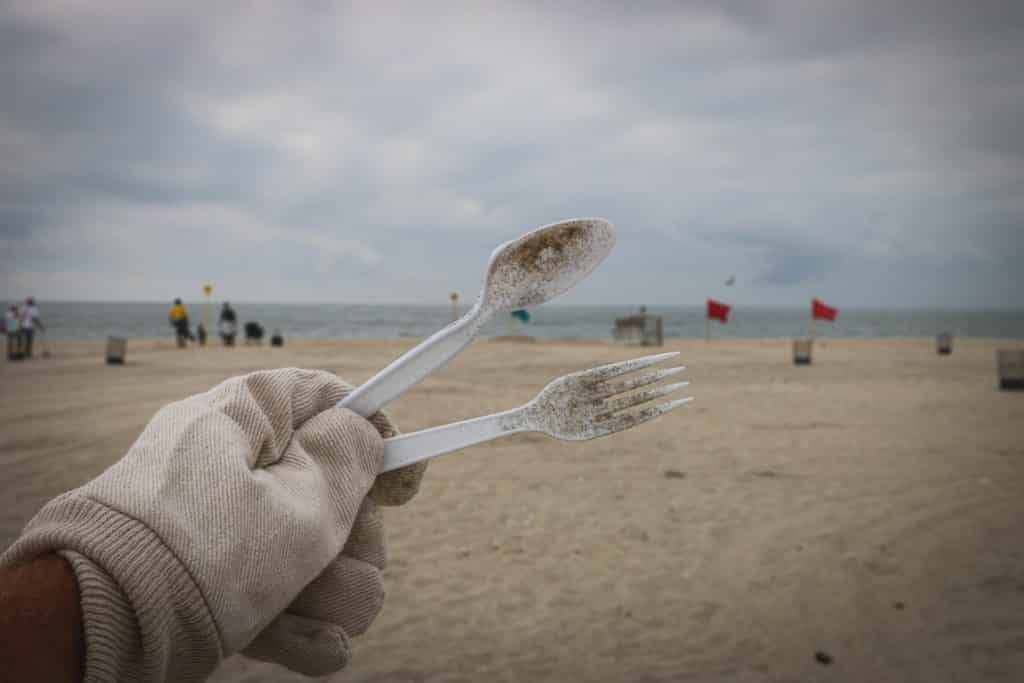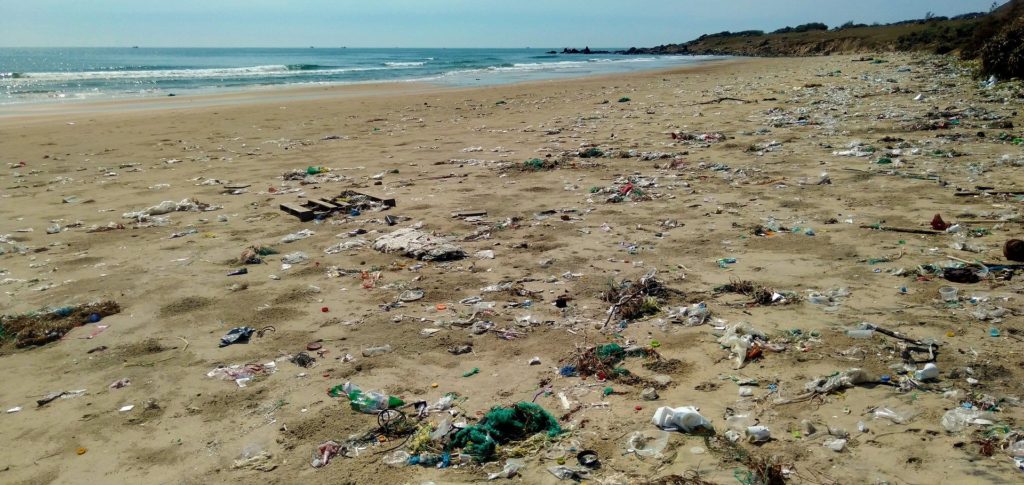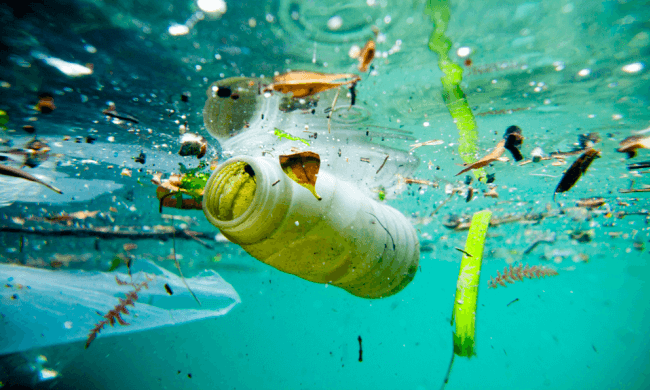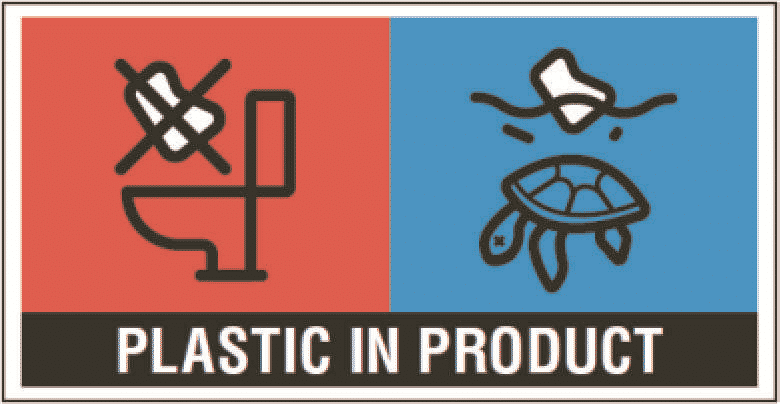ウェットティッシュの新たな表示義務化について

プラスチック汚染が自然の生息地に与える影響は、太平洋のゴミの渦(文字通りプラスチックの島)や、砂の上に散らばった小さなプラスチックの破片を思い浮かべれば、誰もが知っていることだろう。 この世界的な緊急事態を踏まえて、欧州はようやく指令(EU)2019/904を発効させることで、切望されていた変化を起こそうとしている。
単一使用プラスチック(SUP)指令としても知られるこの指令の目標は、プラスチック廃棄物を減らし、環境や人間の安全への悪影響を減らすとともに、革新的で持続可能な循環型経済への転換を促進することである。
第2条に従い、この指令は使い捨てプラスチック製品、酸化分解性プラスチック製品、プラスチックを含む漁具に適用される。2条により、この指令は使い捨てプラスチック製品、酸化分解性プラスチック製品、プラスチックを含む漁具に適用される。 では、この規定は化粧品にどの程度の影響を及ぼすのだろうか?
使い捨てプラスチック製品とは何か?

まず、何が使い捨てプラスチック製品なのかを概説することが重要である。 第3条(2)3(2)では次のように定義されている:
“全体または一部がプラスチックで作られ、その寿命のうちに、詰め替えのために生産者に戻されたり、考案されたのと同じ目的のために再利用されたりして、何度も往復または回転することを達成するように考案、設計、または市場に出されていない製品”。 この点で、使い捨てプラスチック製品は、一度だけ、あるいはごく短期間だけ使用し、その後は廃棄できるように設計されている。 このような例は、「悪名高い」綿棒やストローのようにすでによく知られているものもあるが、プラスチック製のカトラリー、皿、食品容器、さらにはウェットティッシュにまで及んでいる。
指令の対象となるウェットティッシュは?
指令で報告されているように、ウェットティッシュはあらかじめ濡らしたパーソナルケア用品だが、フェイスマスクもこのカテゴリーに含まれる可能性がある。 一度使用することを前提に設計され、プラスチックを含み、あらかじめ濡らしてあるパーソナルケア製品はすべて、この指令の適用範囲に含まれる。
SUP指令に関する欧州委員会のガイドライン(同指令の第12条)により、様々な事例を通じて関係するカテゴリーが明確にされる予定である。
ウェットティッシュに関するEU指令No.2019/904の主な影響:マーキング要件
ウェットティッシュは、指令の3つの異なる条項の影響を受けるが、そのうち化粧品への将来的な影響にとって最も重要なのは、第7条である:

加盟国は、上市される附属書D部に記載された各単一使用プラスチック製品について、その包装上又は製品自体に、消費者に次の事項を知らせる、目立つ、はっきりと読み取れる、かつ消えない表示を付すことを確実にしなければならない:
(a)廃棄物ヒエラルキーに沿った、当該製品の適切な廃棄物管理オプション、または当該製品に対して回避すべき廃棄物処理手段。
(b)製品にプラスチックが含まれていること、およびその結果、製品のポイ捨てやその他の不適切な廃棄物処理手段が環境に悪影響を及ぼすこと。
表面積が10cm2 未満の包装材には、表示を義務付けてはならない。
したがって、次のことは容易に理解できる。 この指令の主な影響は、マーキングとラベリングの要件にある。 これは、プラスチックの存在と製品の適切な廃棄方法を報告するもので、同時に、材料が正しく廃棄されなかった場合の有害な影響も強調するものである。
このマークを表示するには? 欧州委員会規則(EU)No.2020/2151による調和規則
この件に関して、2020年12月17日付の新しい欧州委員会施行規則(EU)2020/2151は、ウェットティッシュを含む指令(EU)2019/904の付属書のパートDに記載された使い捨てプラスチック製品に使用される、位置、サイズ、デザインなどの調和マーキング仕様の詳細を示している。
この規則はEUの全加盟国に直接適用され、2021年7月3日から適用される。 ただし、2022年7月4日以前に上市されたウェットティッシュの包装には、ステッカーによる表示が認められる。
ウェットティッシュの包装に表示すべき印刷表示は以下の通り:

マーキングの情報文は、使い捨てプラスチック製品が上市される加盟国の公用語で書かれなければならない。
このマーキングの位置、大きさ、色などすべての仕様は、この記事の附属書Iに報告されている。
指令のその他の影響

検討すべきは、8条3項と10条である。 これらは相互に関連しており、その影響は他の製品と同様、ワイプの生産者にも直接及ぶ。 加盟国はまた、この種の使い捨てプラスチック製品の生産者が、異なる種類のコストを負担することを保証する:
- 啓発措置(第10条参照);
- ごみの清掃、運搬、処理;
- 指令EC No 2008/98の第8a条(1)の(c)項に基づくデータ収集と報告
これらの措置は、拡大生産者責任として知られている。
Art.5は化粧品にも影響を与えるかもしれない。 この条文では、特定の使い捨てプラスチック製品(注:おしりふきはこの条文の対象外)について、加盟国はその上市を禁止しなければならないと定めている。 もし製品がオキソ分解性プラスチック製であれば、本条が適用されるため、将来的には避けるものとする。
明確にするため、指令ではオキソ分解性プラスチックの定義を以下のように定めている:
“酸化によってプラスチック材料を微細な破片に分解したり、化学分解に導く添加物を含むプラスチック材料” しかし、オキソ分解性プラスチックを使用した製品は、ほとんどが買い物袋やラップなどの包装であるため、化粧品会社にはほとんど影響はないだろう。
結論
その結果、BIORIUSは化粧品ブランドが指令(EU)2019/904の影響を受けると警告している:
- ウェットティッシュのような使い捨てプラスチック製品を販売する場合、いくつかのマーキングとラベリングの要件が適用され、欧州委員会施行規則(EU)2020/2151に定められている。. このマークは2021年7月3日から表示される;
- あるいは、禁止されるであろう酸化分解性プラスチック製の使い捨て製品を販売しているかどうか。
附属書 I:ウェットティッシュの調和表示規格
欧州連合官報に掲載された欧州委員会規則2020/2151の附属書IIの全文を紹介する:
1 – 表面積が10cm2以上のウェットティッシュ(すなわち、プレウェットタイプのパーソナルケア用および家庭用ウェットティッシュ)の包装には、以下の印刷マークを付けなければならない:

注:マーキングの境界の黒い線はマーキングの一部ではない。 その唯一の目的は、白いページにマーキングの境界線となる細い白線を表示することである。
2022年7月4日以前に上市されたウェットティッシュの包装には、本項第1文の適用除外として、ステッカーを貼付することができる。
2 –マーキングは、本項に定める要求事項に適合するものとする。
(a) マーキング位置
マーキングは、包装の外側前面または上面のうち、よりはっきりと見える方に水平に配置すること。
最小サイズの表示が、包装の外側前面または上面に完全に収まらない場合は、包装の両側面、すなわち上面と前面、または前面と側面のうち、よりはっきりと見える方に部分的に配置することができる。
包装の形状や大きさによりマークを水平に配置できない場合は、90°回転させて垂直に配置することができる。
マーキングの箱は分離してはならない。
説明書に従って包装を開封する際、表示が破れたり判読できなくなったりしてはならない。
(b) 刻印の大きさ
マーキングは、2 つの等しい大きさの赤と青のボックスが隣り合わせに配置され、その下に「PLASTIC IN PRODUCT」 の文字が入った長方形の黒いボックスが配置される。 マーキングの高さと長さの比率は1:2とする。
マーキングが貼付される包装の外側前面または上面の面積が 65cm2 未満の場合、マーキングの最小サイズは 1.4 cm x 2.8 cm(3.92cm2)とする。 それ以外のすべての場合において、マーキングは、それが置かれる表面積の少なくとも6%をカバーしなければならない。 マーキングの最大サイズは3cm×6cm(18cm2)とする。
(c)マーキングのデザイン
マーキングのデザインは、効果を加えたり、色を調整したり、レタッチしたり、背景を拡張したりすることなく再現すること。 マーキングは、実寸で印刷した場合、1インチあたり最低300ドットの解像度で再現されなければならない。 マーキングは、細い白線で縁取られなければならない。
PLASTIC IN PRODUCT “の情報テキストは、大文字で、Helvetica Bold フォントを使用すること。 フォントサイズは最低5pt、最高14ptとする。
情報文が加盟国の他の公用語または複数の公用語に翻訳されている場合、翻訳された情報文は、マーキングのすぐ下に配置するか、または最初の言語の下にある長方形の黒枠内に配置し、いずれの場合もはっきりと見えるようにしなければならない。 例外的に、包装の外部前面または上面に空間的制約がある場合は、加盟国の他の公用語または複数の公用語に翻訳された情報文を、マーキングにできるだけ近く、かつ明確に見える場所に、包装の別の場所に配置することができる。 翻訳された情報テキストは、大文字でHelvetica Boldフォントを使用しなければならない。 フォントサイズは最低5pt、最高14ptとする。 長方形のブラックボックス内に追加言語の情報テキストを配置する場合、要求されるマーキングの最大サイズからの緩和が可能である。 以下のカラーコードを持つ色を使用する:- 白:C = 0 / M = 0 / Y = 0 / K = 0 – 黒:黒:C = 0 / M = 0 / Y = 0 / K = 100 – 赤:赤:C = 0 / M = 90 / Y = 60 / K = 0 – 青:C = 60 / M = 0 / Y = 0 / K = 0.
附属書II:おしりふきに関する各国固有の事項
- フランス:指令の発表を受けて、フランスの化粧品・パーソナルケア協会のグループは、ウェットティッシュの表示を調和させるための優良事例の勧告を発表した。 例えば、おしりふきはトイレに捨てられると謳った商品を市場に出さないことが推奨される。なぜなら、その性質上、トイレに捨てられるのはトイレットペーパーだけだからである。 生分解性という用語は、ワイプが分解に要する時間に関して評価される分解度、EN 13432 (2000)規格または同等のテストに準拠していること、といった特定の特徴を持つ場合にのみ使用できる:OECD試験:OECD試験:易生分解性301 A、DOC除去試験、301 B、CO2発生試験、301 F、マノメトリック・レスピロメトリー。
- 英国CTPA(Cosmetic Toiletry and Perfumery Association:化粧品トイレタリー香料協会)は、ウェットティッシュを含む環境クレームに関するガイダンスを発表した。 流せる」という謳い文句は、この目的のために特別にデザインされたウェットティッシュにのみ使うことができる。 この情報は消費者に明らかにされるべきである。
付録III:補足事項
- この指令が94/62/EC(包装および包装廃棄物指令)または2008/98/EC(EU廃棄物枠組指令)と抵触する場合は、使い捨てプラスチック指令が優先する。
- 前述したように、指令(EU)2019/904の対象となるウェットティッシュのカテゴリーの例は、近日中に発表される欧州委員会のガイドラインによって示され、特定の製品をSUP指令の範囲に含めるか除外するかのガイダンスが示される予定である。 フェイスマスクやメイクアップワイプはこの指令に該当すると予想される。
- 指令で報告されている「プラスチック」の実際の定義には具体的な境界線がなく、ビスコースやリヨセルなどの素材も対象となりうるため、この点についても欧州委員会のガイドラインによる明確化が期待されている。
参考文献
欧州のバイオ経済におけるセルロース繊維の導入に向けたプラスチックの定義の明確化。 AISE、CEPI、CIRFS、EDANA、EURATEXの共同文書、2020年4月。
2020年12月17日付の欧州委員会施行規則(EU)2020/2151は、特定のプラスチック製品の環境への影響の低減に関する欧州議会および理事会の指令(EU)2019/904の付属書のパートDに記載された使い捨てプラスチック製品の調和マーキング仕様に関する規則を定めたものである。
CTPA環境・グリーンクレーム、2020年7月号。
特定のプラスチック製品が環境に与える影響の低減に関する2019年6月5日の欧州議会および理事会の指令(EU)2019/904。
インプリネット-推奨された慣習-AFISE、COSMED、FCD、FEBEA、FMBの共同文書、2019年6月。


